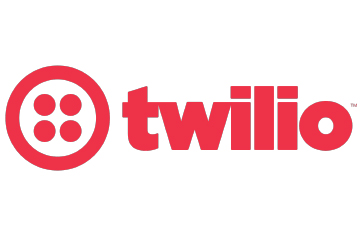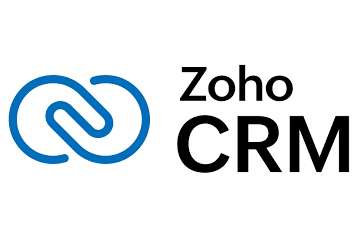The Silent Loyalty Killer: Internal Misalignment Between CX and Operations
Even the best CX strategies fail when teams operate in silos. Loyalty is lost not in touchpoints—but in the handoffs between them. What can be done?
Topics

The campaign was flawless. The product shipped on time. The NPS score looked solid. But churn spiked regardless.
Internal misalignment between teams is the silent loyalty killer no one talks about.
It’s not the significant, dramatic failures that cost you customers. It’s the quiet breakdown between what marketing promises and what operations deliver. And they’re happening in nearly every company, every day.
Most organisations assume loyalty is lost at the point of contact. However, more often, it gets lost in the handoff.
In today’s experience economy, every team—from marketing to logistics—plays a role in shaping how customers perceive a brand. But too often, those teams operate in silos. CX owns the voice of the customer. Operations’ execution. And in the space between them, customer trust quietly erodes.
The issue isn’t intent. Most companies are full of smart, well-meaning people doing their best. But when CX and operations are not aligned around shared goals, metrics, and workflows, the cracks begin to show—missed handoffs, inconsistent service, and broken promises.
Marketing may launch a campaign offering “white-glove onboarding,” but the support team is unaware and under-resourced. Ops may streamline a process for efficiency, only to introduce friction for the customer. These aren’t isolated missteps—they’re symptoms of a larger issue: internal misalignment that undermines the very loyalty brands are trying to earn.
And the worst part? Leadership often doesn’t see it—until the churn reports roll in.
- Loyalty Fails in the Spaces Between the Silos. Most loyalty issues don’t stem from a broken touchpoint—they stem from the disjointedness between them. Customers interact with your brand across marketing, operations, digital, and service channels. But behind the scenes, those teams often operate with different priorities, tools, and definitions of success.
ALSO READ: There is a Disconnect Between What Consumers Say, and What They Do
Even high-performing teams can collectively deliver a fragmented experience when those internal seams show. And customers don’t blame a department. They blame the brand.
- CX Is Not a Department. It’s a Business Discipline. Too many companies treat CX as a function that steps in after the real decisions have been made. But customer experience isn’t something you fix—it’s something you design from the start.
Organisations that consistently earn loyalty are those that embed CX thinking into operational planning, not just customer touchpoints. They make experience a core input to process design, hiring models, and partner decisions. They don’t treat it as a bolt-on but as a business imperative.
- When Metrics Don’t Align, Neither Do Teams. It breaks down here: the CX team is measured on NPS and CSAT. The ops team is measured on efficiency and cost savings. Marketing celebrates acquisition, even if churn quietly climbs. Everyone’s winning on paper, but the customer isn’t.
ALSO READ: In Conversation with Andy Cooney, Co-Founder of Marcode
Loyalty isn’t driven by isolated KPIs—shared outcomes drive it. Companies need unified scorecards that align departments around retention, resolution, and customer lifetime value. Without that, teams will continue pulling in different directions, and customers will feel the tension.
- The Customer Journey Needs an Owner. Journey mapping is helpful, but it’s not enough. Most companies stop at visualising the friction points—they rarely assign responsibility for fixing them. That’s where things fall apart.
The real differentiator is journey ownership. When companies give cross-functional teams the mandate—and the authority—to improve the full experience, the results compound quickly. It’s not about perfection. It’s about consistency, collaboration, and making the customer whole across every function.
Misalignment between CX and operations doesn’t require a full restructure—it requires intentional collaboration and shared accountability. Here’s where to start:
- Create a Unified CX-Operations Scorecard Move beyond siloed KPIs. Build a cross-functional scorecard that includes shared metrics like customer effort, first-contact resolution, and churn reduction. When teams are measured by the same outcomes, alignment becomes more natural—and more sustainable.
- Bring CX into Operational Planning, Not Just Feedback Loops Don’t wait until after the process is live to ask how it will affect the customer. Involve CX leaders in the early stages of operational design—whether you’re launching a new fulfillment model, adjusting staffing plans, or integrating a new tool. Make the experience a design input, not just a post-launch review.
- Fix the Handoffs First Before you overhaul your systems or rebrand your service strategy, look at where the baton gets dropped—between marketing and support, product and operations, digital and in-person. Loyalty is often lost in the transitions. That’s where your first wins are hiding.
- Assign Journey Owners Across Functions Designate cross-functional leads responsible for specific customer journeys—from onboarding to issue resolution to re-engagement. Give them the visibility, authority, and support to drive change. When the journey has an owner, the experience has a chance.
Loyalty isn’t just built through great products or smooth transactions—it’s built through consistency, clarity, and alignment across every function that touches the customer.
When CX and operations work in silos, even the best strategies fall apart in execution. But when they’re aligned, the experience feels seamless—and customers feel seen.
So here’s the question: Where in your organisation is the handoff costing you loyalty? And what would happen if you fixed it?
ALSO READ: Trust is Currency: Capturing Every Sale in a Downturn








































































































